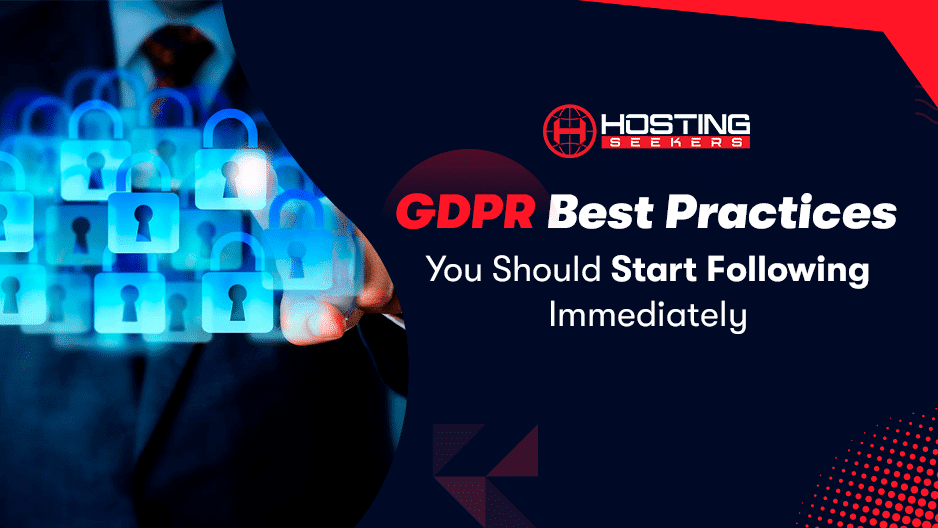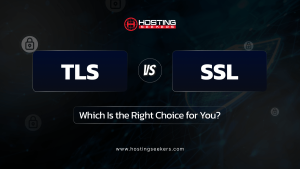
GDPR Best Practices and Tips – Start Managing Sensitive Data The Better Way
Security Updated on : December 17, 2024As an online business owner, what is your worst fear?
Over 90% of small and large businesses have reported that data security and cyber threats are one of their major concerns when it comes to managing an online business.
– Source
Data security and controlling access to crucial information have been two main concerns for most website owners, entrepreneurs, webshop operators, and online service providers. Be it campaigns, customer data, cookies, tracking code, or any other operation, data protection plays a vital role everywhere.
Considering the importance of data security, the European Union has established the General Data Protection Regulation (GDPR) Best Practices with the purpose of powering up and unifying data protection for everyone residing in this political community.
Some of the data protection violations under GDPR include:
- Data breach,
- Manipulation of data,
- Encryption of data using ransomware
- Collecting client data without oversight or proper disclosures
But what exactly does it mean for business and website owners? How can we protect our website from the serious consequences of a data breach?
Read this article till the end if you want to manage your GDPR compliance like a pro.
What is GDPR and Who Does It Apply To?
The EU General Data Protection Regulation (GDPR) is a new EU regulation established by the European Parliament, a Council of the European Union, and the European Commission to unify and reinforce data protection that applies throughout the European Union, in consideration of technology.
The GDPR regulates data protection law uniformly all across Europe to monitor how companies are handling their clients’ personal data.
Let us clarify that this law is also being applied to all companies outside the EU, regardless of their legal status or geolocation, as long as they offer products or services to EU citizens.
This regulation gives the European Union the authority to hold businesses accountable for the way they collect and use individuals’ personal information.
In short, this legal framework is a set of rules that directly impact the storage, data processing, authority, transfer, and disclosure of a user’s data records and affects any company globally that processes this personal information from the European Union.
What are the Main Objectives of GDPR Best Practices?
- GDPR analyzes the data processing impacts of any project carried out by companies, entrepreneurs, or professionals.
- According to GDPR, the declaration of the interested party must be produced, or some positive action must be taken that allows the consent to be unequivocal.
- Clear, legible information must be offered while processing the data.
- All the security measures must be taken by the companies for the right treatment and data storage of their clients.
- Eventually, it is mandatory to have a proper data protection “delegate” in all security measures.
All of the GDPR goals (confidentiality, legality, reliability, transparency, data minimization, limitation, integrity, correctness, storage, and accountability) must be achieved through the data processing principles set out in Art.
GDPR Best Practices
1. Gather GDPR Information From Credible Resources
2. Analyze Data and Understand How To Use It
3. Consent: Think Carefully Before You Process Data
4. Go Through All Security Measures and Policies
5. Train employees On How to Use Personal Data
6. Clarify GDPR Compliance With Other Businesses
7. Cross-Check Existing Processes When Your Employee Leaves
Best Practices: Implementation of GDPR
Today, several companies are implementing GDPR. This new regulation poses major bureaucratic and technical challenges for businesses. To make sure you are GDPR-compliant, follow these best practices step by step:
1. Gather GDPR Information From Credible Resources
You must read the GDPR legal documentary by yourself, and you will find it extensive, for sure. There are several applications on iOS and Android that allow full-text search, tips, and checklists, which are worthwhile to get started with. Make sure whatever you prefer to read is credible and comprises the correct GDPR laws as defined by the EU.
2. Analyze Data and Understand How To Use It
Before you adopt GDPR, you must understand the types of user data that you or your company possess. For instance, names, location, IP addresses, bank details, browser type, etc. Besides, someone’s religious opinions and health issues details are also confidential and sensitive data. Therefore, you must understand where it comes from and accordingly plan its usage.
3. Consent: Think Carefully Before You Process Data
Ask yourself if your company requires your client’s consent before you process their personal data. Some marketing techniques require consent. This might sound complicated, but it is non-negotiable. As a company, your consent must be clear, concise, and to-the-point, and you must know what you are doing with the data. It is recommended to avoid the need to depend on consent unless it is actually required.
4. Go Through All Security Measures and Policies
Before proceeding, understand current security measures and policies to stay up-to-date with GDPR compliance. In addition, consider all the security demands related to data privacy and cross-check all the general precautionary measures you can encrypt.
5. Train employees On How to Use Personal Data
Make sure you hire data security and GDPR experts or train your existing employees on personal data. They must understand what constitutes users’ personal information and how to process it safely so that it can be protected from cyberattacks and data breaches. Also, there must be a DPO (Data Protection Officer) in your team responsible for data protection compliance.
6. Clarify GDPR Compliance With Other Businesses
Do not forget to connect all your partners and service providers and check them for their GDPR compliance. These providers must be able to offer the client information on how they are using and implementing the new and upcoming data security requirements. If the service provider is unable to provide any qualified information, then you must investigate it fundamentally again.
7. Cross-Check Existing Processes When Your Employee Leaves
The departure of any employee is very common for business processes with relevance to data protection. Therefore, it is advised to clearly regulate such processes, and these must be standardized by May 25th by blocking all accounts and devices with sensitive user information. All the rules and responsibilities must be clearly regulated within the defined time period.
Special Recommendation: Configure a Remote Work Policy for DLP
The COVID-19 pandemic has now shown us that the world must be prepared for remote work in case of any emergency or natural disaster. Though companies have invested heavily in corporate network security, once a system is out of this network, its confidential data becomes vulnerable to cyberattacks.
Our Recommendation: You can establish a proper remote work policy consisting of DLP (Data Loss Prevention) tools that work well outside the company network, no matter if the device is online or offline.
Conclusion
GDPR (General Data Protection Regulation) best practices are the legal framework that establishes the protocols to be followed regarding the processing and usage of personal data of individuals. Now, the question is ‘Are you prepared to ensure its alignments with GDPR requirements?’ Or, have you designed a data management plan that will allow you to move forward with a complete guarantee of compliance?
Once you are able to answer these questions, you are good to go with GDPR, and do not forget to implement these GDPR best practices while processing user information.
Wish you luck!




